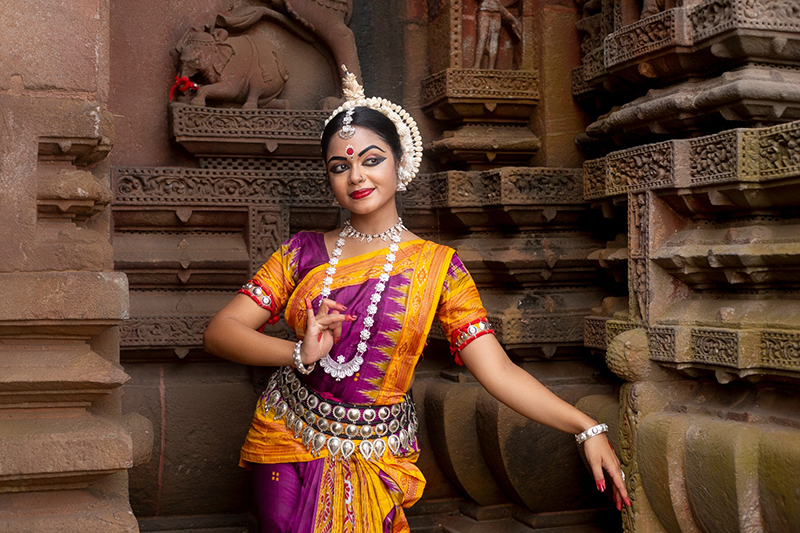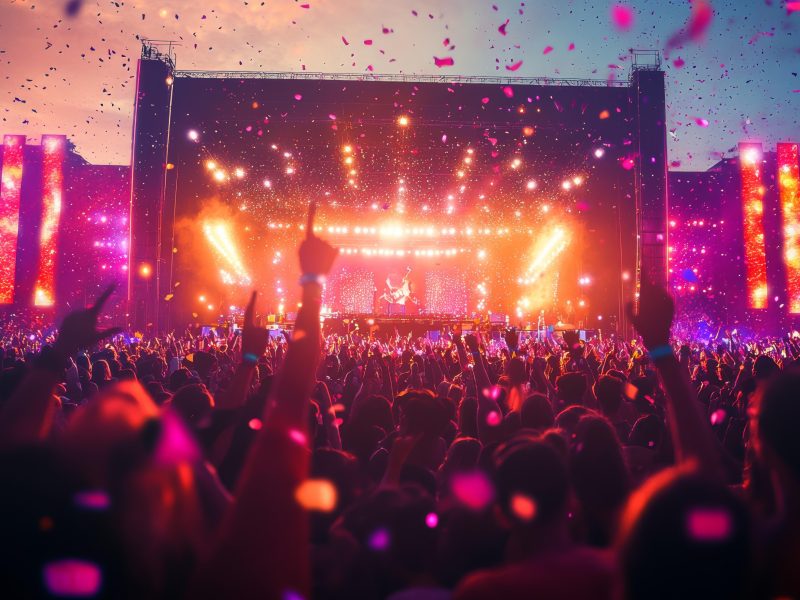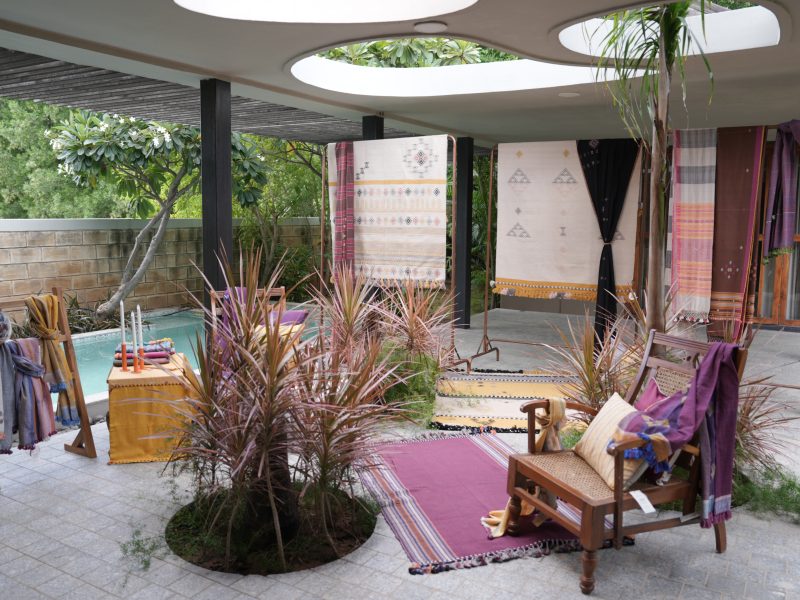The purpose of Indian classical dance is not just entertainment but also philosophical expression. It is also a way to tell stories from sacred texts, showing the bond between divine and human realms
“Dance is an integral part of our cultural identity, and my daughter Kyna has been enchanted by its rhythm since she was five years old,” says Delhi-based language expert Priyanka Bose, who introduced her daughter to the art form early on, once she saw the spark in her.
“Her performance on stage at a tender age, alongside 30 seasoned dancers, was a remarkable beginning. As she moved in harmony to the folk song, it was clear that dance was not just a hobby, but a tradition she needed to nurture. Kathak dance, in particular, is not just an art form but an emotion that needs to be experienced. Through these years, she has learnt the nuances of the sacred relationship between guru and shishya (student). Beyond rhythm, mudras, tukdas, and chakras, I believe Kathak is also an excellent way to cultivate physical and mental well-being. It’s a skill she is earning and saving for her years to come,” said Bose.
When it comes to Indian classical dances, there is almost a sense of reverence and spirituality attached to them. These dances are steeped in tradition and culture. The grace, technique, charm, expressions, and years of relentless practice and passion make Indian classical dances some of the most respected and recognized forms of elevated arts.
According to Bharatanatyam dancer Padma Shree Geeta Chandran, “Learning classical dance is the most complex education one can receive today. It is so interconnected with philosophy, ritual, religion, myths, ancient texts, poetry, literature, art (painting and sculpture), cultural studies, yoga, handicrafts and handlooms, beauty, and aesthetics. It is a rare undertaking that connects the body with the mind and spirit.”
She adds that only those parents who understand this can make an enlightened choice for their child.
Indian classical dance: Discovering its infinite layers
“Classical dance training often begins at seven years of age. At that age, the child is too young to make decisions, and it is the parents who decide the dance form they will learn and from whom they will learn. Classical dance is serious business; it is not a hobby class to merely pass the time,” said Chandran.
It takes about three to four years to hone each stage of dance — the basic foundation, the intermediate level, and the advanced level. An investment of eight to twelve years is required to reach anywhere close to being called a classical Indian dancer.
The milestone that marks the completion of a dancer’s formal training under their guru (teacher) is called Arangetram in Bharatnatyam and Manch Pravesh in Kathak and Odissi. It signifies that the dancer has completed their initial years of training and is ready to perform in front of an audience as a solo artist.
Odissi dancer Padma Shree and SNA (Sangeet Natak Akademi) Awardee Ranjana Gauhar says, “Sadhana in any art form is endless. You cannot quantify it. It is a process of self-realisation, learning, spending time with the guru, and delving into the deeper layers, which may not be evident in the beginning, but as you groom and start to analyse your art form, you discover infinite layers. The practice of seven to eight hours is for oneself. Gurus do not give more than an hour a day to one student. If one trains as a child, it is recommended they continue pursuing the art. Even today I am ready to learn, ready to grow, and find new avenues within my own form.”
This training is long and arduous. “It takes a decade to produce a complete dancer. At that stage, the dancer is ready to begin speaking, so to speak! For the first few decades thereafter, the dancers speak in the language in which they have been taught,” says Chandran, adding, “And if they then mature to become artists, they develop their own voice and articulation. At that point, they may choose to continue speaking the main language of the dance, which is mythological narratives, or they may choose to narrate contemporary stories. Bharatanatyam is an art form, and the artist practitioner decides how to speak with it.”
It takes years of sadhana and riyaaz (practice) to learn a classical dance form. There is an emphasis on emoting expressions. According to renowned Kathak dancer and Padma Shree awardee Shovana Narayan, “In any Indian classical dance form, the student or performer has to first learn the basic grammar of tala and movements. These are associated with bhava and rasa for even a rhythmic movement is not devoid of bhava. In fact, life itself, the first movement of breath, is associated with bhava. So, it is in dance! Even the initial namaskar is not devoid of bhava, for it is the bhava of devotion that comes through.”
Narayan further said, “Enactment of text requires the utilisation of hasta mudras and facial bhavas, which the student has to learn, understand, and then emote. Nothing is learnt in a day. Dedication, (sadhana) and practice (riyaaz) are required. Riyaaz also entails the disciple watching and listening carefully to the training being imparted sravana with respect sraddha. It also includes contemplation on the explanations (arthavada) and practicing what has been taught (srama or abhyasa) so that they can fully comprehend what has been taught (artha vigyan), which is important in the path of attaining skill and knowledge of the art of dance.”
She went on to add, “Practice hones one’s skills, and the more time you spend honing the art of dance, the more effortless it becomes. Talent alone is not enough. For talent to shine, it requires hours of dedicated practice. It is like a diamond. It is the polishing of the natural diamond that brings out its fire, brilliance, and sparkle.”
Indian classical dance: Key things to invest in
Besides training, the dancer has to get the look right. A learner has to invest in appropriate costumes, jewellery, makeup, and accessories. For instance, the costumes for female Kathak dancers include a lehenga-choli-dupatta and sometimes the churidar pyjama-angarkha-dupatta.
For male Kathak dancers, it is usually a dhoti and bandi, or a dhoti and bare upper body. The ghungroos, jewellery (earrings, bangles, maang tikka) form an eminent part of this dance. The focus is on facial expressions, and a minimalistic look is achieved through light makeup, emphasis on eyes with kohl and eyeliner, and a small traditional bindi.
Bharatnatyam is all about creating a dramatic look through bold eyebrows, red lips, heavy eye makeup, and a large decorative bindi. The popular costume of Bharatanatyam today is based on the style of a navari (9-yard) sari, along with temple jewellery of gold-plated material or imitation gold designed in traditional South Indian styles. One has to wear a headpiece (Nethichutti), nose ring, necklaces, earrings, bangles, waist belt (Oddiyanam), and anklets.
For Odissi, the dress is a saree in Sambalpuri silk or pattachitra, brightly coloured with a black or red blouse called kanchula. The credit for present-day Odissi costume goes to the seminal work done by groups of dedicated persons, including the Jayantika group in the 1950s, capitalising on the availability of the beautiful ‘pata’ silk sarees, silver filigree jewellery, and the ‘pith’ flowers so characteristic of Odisha.
It was influenced by the Kalakshetra style of costuming. Traditionally, the maharis wore a sari with a black blouse. The make-up is headlined by heavy kohl and eyeliner, darkened eyebrows, red lipstick, and white dots around the eyes and forehead, which are drawn using rice paste. There is an emphasis on symmetry and elaborate forehead decorations, reflecting the temple origins of the dance form.
Shovana Narayan adds, “Whether in life or on stage, aharya abhinaya (the kind of dressing/attire in terms of costume, make-up, and accessories) makes a statement even before a word is spoken or an action performed. It communicates the attitude, personality, and mood of the person, and their response to an occasion (which on stage is the stage set).”
The Natyashastra, says Narayan, states that aharya abhinaya has the most powerful status of communication to establish the intended rasa. As Indian classical dances are offerings to the Lord, where His attributes and deeds are described, therefore facial makeup with stylised eye makeup emphasises the mobility of the dancer’s changing facial expressions.
“The focus is on the eyes, eyebrows, and facial expressions in communication, as they are important non-verbal body language that sometimes speaks even more than words,” she said.
Similarly, the painted hands with alta (a red dye) highlight the mudras (hand gestures) used. Alta (which is believed to have its roots in the Sanskrit word Alaktaka, meaning ‘a red dye’) is also a symbol of auspiciousness and feminine beauty. The footwork utilised in Indian classical dances is enhanced by the use of ankle bells.
“The manner in which the Kathaks wear the ghunghroo reflects the ancient practice of over 2000 years ago, which has been described in the ancient text, Abhinaya Darpan, i.e., “the ghunghroo or kinkinis (tiny bells) should be made of bronze and should have a pleasant tinkling sound. At least 100-200 should be bound around each ankle with blue thread in tight knots,” she added.
The stage set for most of the dance forms usually consists of the idol of either Nataraj or Ganesh. For Odissi, it is the idol of Jagannath, Subhadra, and Balrama, whereas in Kathakali, the opening curtain (Thirasseela) and the six-foot-high wick lamp (kalivilakku) are significant features.
Indian classical dance: How to choose a dance form
The origin of Indian classical dances is the Natya Shastra written by the great scholar Bharata Muni. It forms the foundation of classical dances. The eight recognised Indian Classical dances include Bharatanatyam, Kuchipudi, Kathak, Kathakali, Odissi, Manipuri, Sattriya, and Mohiniyattam. How does one choose a dance form?
As Ranjana Gauhar puts it, “I did not choose dance. I think this art chose me. Odissi chose me because I had no connection with it. I just happened to witness one such Odissi show in the 70s, and it touched me so deeply that I immediately understood that this was my calling and the purpose of my life. As I discovered dance, I found that Odissi is very lyrical and graceful in movements, riding on strong emotional flavours. It has a lyrical quality. The music is also mellifluous. Above all, the key to Govindam, the long love poem between Radha and Krishna — the epitome of classical poetry in Sanskrit — is matchless. All these aspects possess strong emotional characteristics that I found very attractive.”
Dance is not only a journey, a process of learning and art, but also a journey of the artist. This experience of learning dance touches one’s soul, awakens consciousness, and makes the dancer more alive and sensitive.
A good foundation is everything in classical art forms. Kathak dancer, educator, and author Dr Parul Purohit Vats says, “As a traditional dance guru deeply invested in preserving the spiritual and classical essence of Kathak, I would emphasize that the most crucial aspect for a new learner is to cultivate a solid foundation in the classical form. This includes mastering the fundamental techniques, understanding the traditional rhythm (tala), and the most important thing is to develop a deep respect and understanding of the tradition, discipline, and spiritual essence that this classical dance form embodies.”
She adds that the core of Kathak lies in its classical repertoire, which is steeped in historical, spiritual, and cultural significance. As for performing Kathak to Bollywood semi-classical songs, from a traditional perspective, it is crucial to preserve the purity and sanctity of the form.




